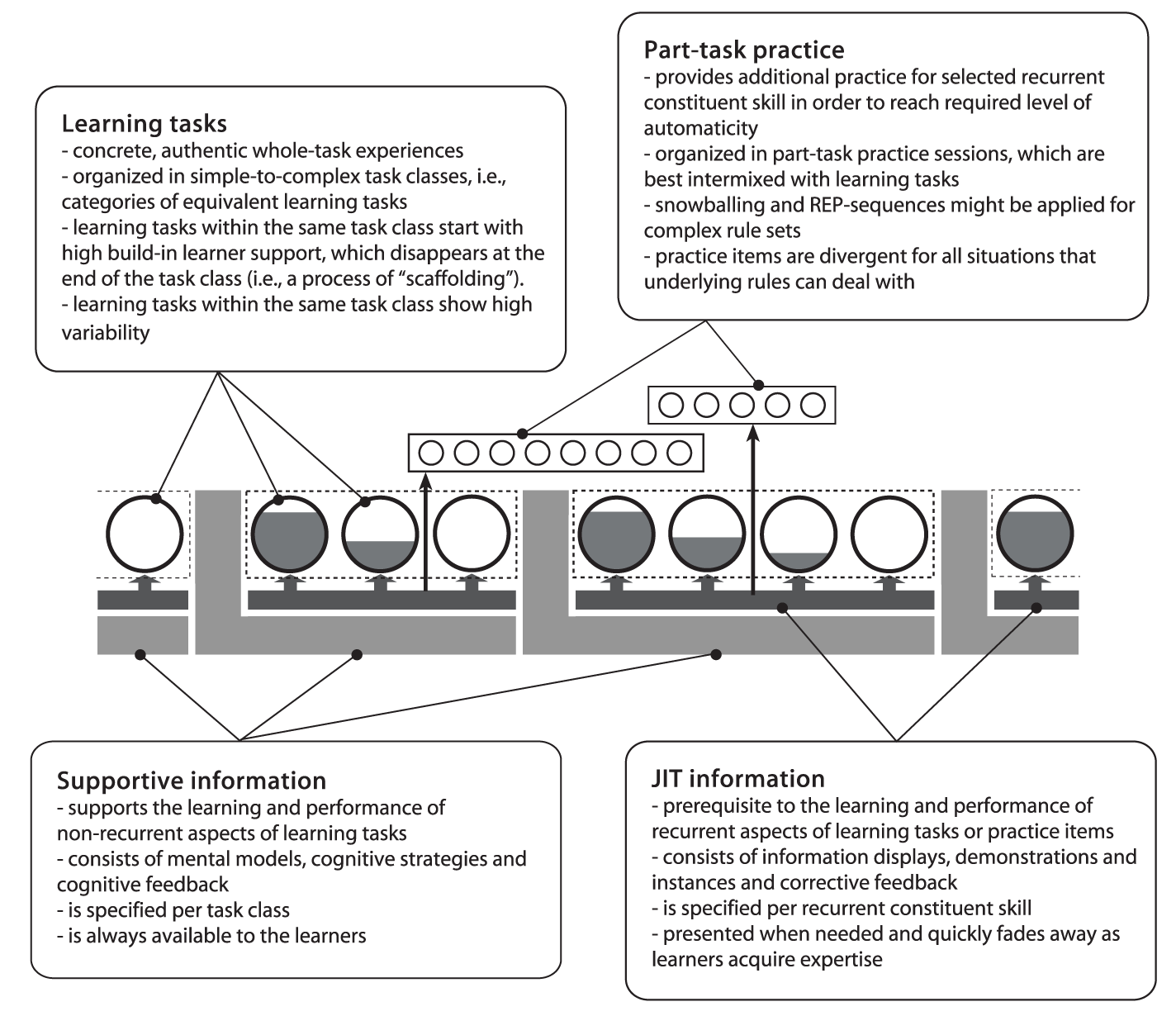Instructional Design Models provide a framework for instructional designers to follow during the development of instructional tutors, tools, and materials.
ADDIE – Analysis, Design, Development, Implementation, and Evaluation is one of the most popular instructional design models in use today. This is due in part to the broad universal nature of its framework. Below is a video that explains the basic concepts of the ADDIE model.
4C/ID – The Four Component Instructional Design model was developed by Joroen van Merrienboer as a framework to be used for the design of complex learning and is based on Cognitive Load Theory (CLT). Van Merriënboer writes in Reiser & Dempsey (2007) “complex learning aims at the integration of knowledge, skills, and attitudes; the coordination of qualitatively different constituent skills; and transfer of what is learned to daily life or work settings.” 4C/ID focuses on meaningful whole learning tasks, scaffolding, and acheiving transfer. The 4C/ID model is organized around, as the name suggests, a four component model. The four components are: 1) learning tasks, 2) supportive information, 3) procedural information, and 4) Part-task practice. The figure below depicts the four components and provides additional information about each of the four components
